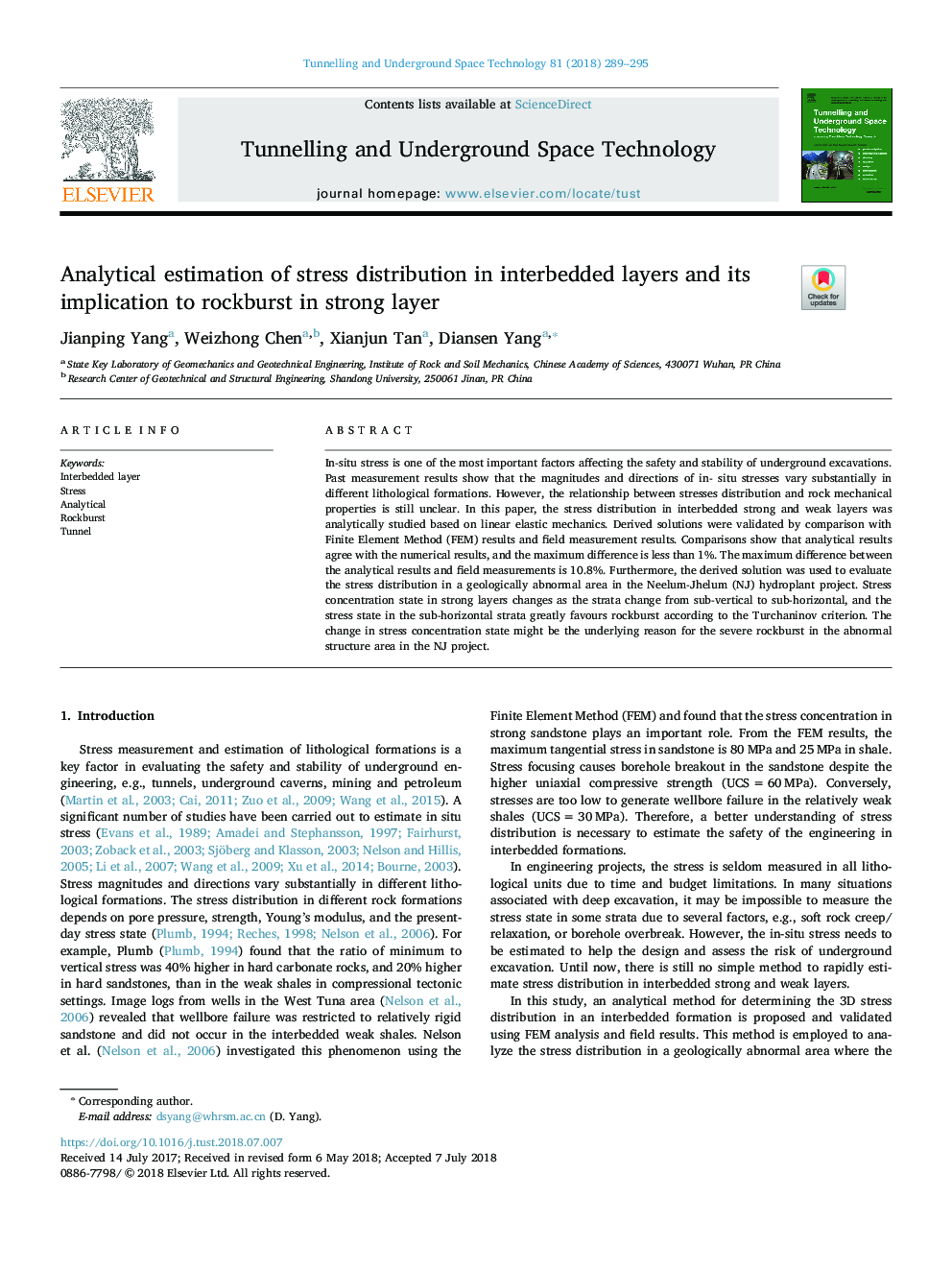| Article ID | Journal | Published Year | Pages | File Type |
|---|---|---|---|---|
| 6782254 | Tunnelling and Underground Space Technology | 2018 | 7 Pages |
Abstract
In-situ stress is one of the most important factors affecting the safety and stability of underground excavations. Past measurement results show that the magnitudes and directions of in- situ stresses vary substantially in different lithological formations. However, the relationship between stresses distribution and rock mechanical properties is still unclear. In this paper, the stress distribution in interbedded strong and weak layers was analytically studied based on linear elastic mechanics. Derived solutions were validated by comparison with Finite Element Method (FEM) results and field measurement results. Comparisons show that analytical results agree with the numerical results, and the maximum difference is less than 1%. The maximum difference between the analytical results and field measurements is 10.8%. Furthermore, the derived solution was used to evaluate the stress distribution in a geologically abnormal area in the Neelum-Jhelum (NJ) hydroplant project. Stress concentration state in strong layers changes as the strata change from sub-vertical to sub-horizontal, and the stress state in the sub-horizontal strata greatly favours rockburst according to the Turchaninov criterion. The change in stress concentration state might be the underlying reason for the severe rockburst in the abnormal structure area in the NJ project.
Keywords
Related Topics
Physical Sciences and Engineering
Earth and Planetary Sciences
Geotechnical Engineering and Engineering Geology
Authors
Jianping Yang, Weizhong Chen, Xianjun Tan, Diansen Yang,
